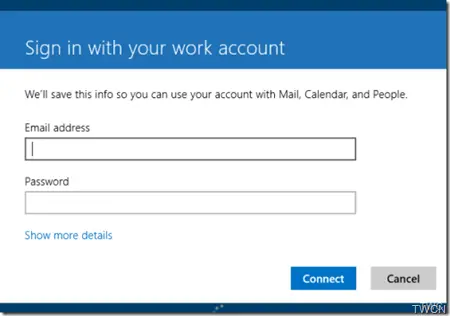With the release of Windows 8.1 and Windows RT 8.1, a much improved version of the Mail app has been provided. We had seen some of the improved features in our earlier blog post. Apart from these features, the new Mail app in Windows 8.1 also has been enhanced for the enterprise users, thus making the Mail app useful for the work environment as well. Here are some of the features improved for enterprise users.

The new Mail app can now be used to connect to an Exchange mailbox without using a Microsoft Account. Earlier you were required to sign-in to Mail App using Microsoft Account . Even when you were signed into using the local account, you were prompt to switch to Microsoft Account, if you wanted to use the Mail app. But with Windows 8.1, you are no longer required to do so. Enterprise Customers who use domain accounts will be able to use Mail App with Windows 8.1. And this applies not only to the Mail App, but to some other Windows Store Apps too, that support the feature. A new group policy setting has been provided to enable this.
Check this post on how to set up Windows 8.1 Mail App without using a Microsoft Account, which we had covered earlier for the details for how to enable this Group Policy.
Some organizations which require certificates to connect to Exchange mailboxes can also use the Mail app, as it now supports certificate-based authentication. The communications applications warn the user with a prompt providing an option to connect anyway, when trying to connect to services with common service certificate issues.
The new Mail app can now be used inside the company’s network as authenticated proxy servers are fully supported by the new Mail app. The communications applications can connect over LAN or WiFi connections via authenticated proxies which use standard authentication methods including: NTLM, Digest, Negotiate, and Basic authentication.Any user credentials entered can be cached for the session, or remembered persistently.
More details can be had here.
Leave a Reply